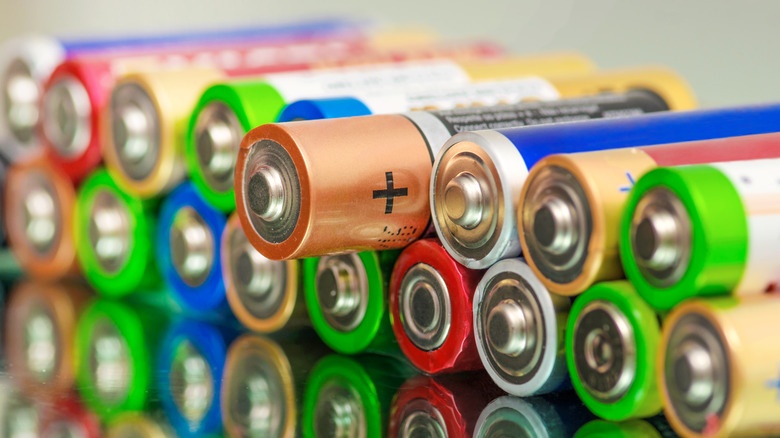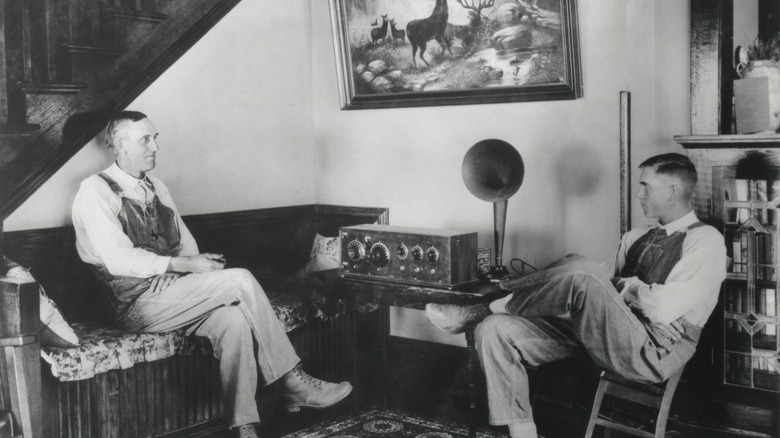Is There Such A Thing As A B Battery?
Batteries use a strange alphabet, running from AA to AAA, then C to D. These letter designations cover some of the most common power sources used in consumer electronics, even if many devices today, like smartphones and video game controllers, use rechargeable lithium-ion batteries. AA and AAA still power many TV remotes and toys, while C and D batteries are typically reserved for larger items like portable stereos or flashlights. But there are actually many varieties of batteries in between these, from the A (or "single A") battery to the B battery.
A 2012 posting by Mental Floss explains that the A, B, C, and D designations can be traced back to the early 20th century, with roots in wartime manufacturing. The A and B batteries once had comfortable roles in some of the most common devices of the era, with their names coming from official designations meant to standardize American power cells — that is, until engineers and manufacturers devised ways to eliminate them from their products entirely.
Where B batteries come from
Between the 1910s and '20s, during and after the industrialized destruction of World War I, a group comprised of American battery makers and the War Industries Board teamed with government agencies to standardize the battery cells we know today. Along with standardizing their shape, size and performance, this group also agreed on their names: the smallest was A, and rose to B, C and then D.
According to The Daily Beast, one major usage for batteries at the time was in early radio sets — either in combinations of A and B or A, B and C. This was due to the need for early radios to be supplied with two or more different voltages to power the tubes and circuits inside them. However, radios needing multiple power sources to function meant there were multiple ways for them to fail.
Radio manufacturers were determined to design more reliable radios that didn't need batteries to work. With more homes wired up with AC electricity in the 1920s, radio makers ditched disposable batteries, leaving the hefty A and B cells in the dust as smaller versions like AA became more popular. But these legacy batteries never truly disappeared.
What happened to the B battery?
Today I Found Out clarifies that the B batteries used in vacuum tube devices like radios aren't exactly the same as the B batteries in limited use today. The A, B and C batteries were designations referring to the roles each battery played within the device, though they seem to have influenced the naming conventions adopted since. "Certainly actual [American National Standards Institute] standard 'B' batteries could be combined and used for this type of application," writes Today I Found Out, "but really any battery or group of cells worked and would still be called a 'B' battery in this context."
Far more than radio manufacturers leaving the B battery behind, its waning popularity has played a far bigger role in its obsolescence. B never had much commercial appeal, while the smaller and more common AA and AAA batteries steadily became the new standard. Meanwhile, C and D serviced larger devices with higher power requirements, leaving the in-between size of B batteries behind.
Even though modern B batteries have slipped far behind their contemporaries in terms of popularity and standardization, they're still used to power lanterns and bike lights in Europe (via Mental Floss). However, their popularity is fading there, too. If you're looking for replacement B cell batteries, you might have a hard time finding them, even online.


